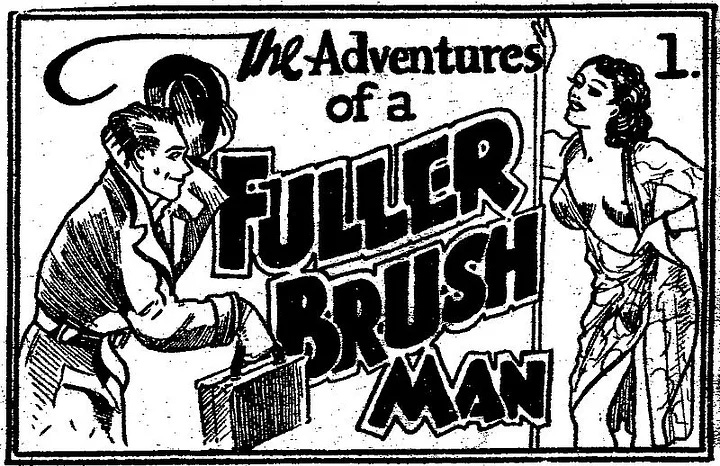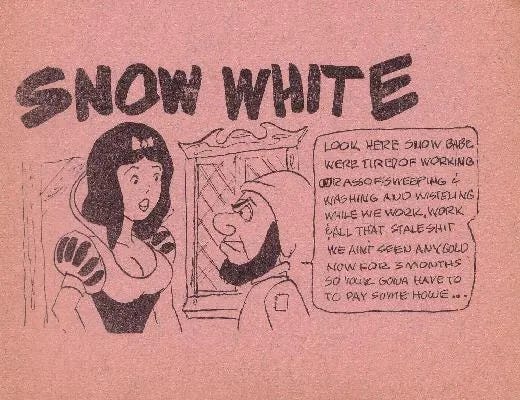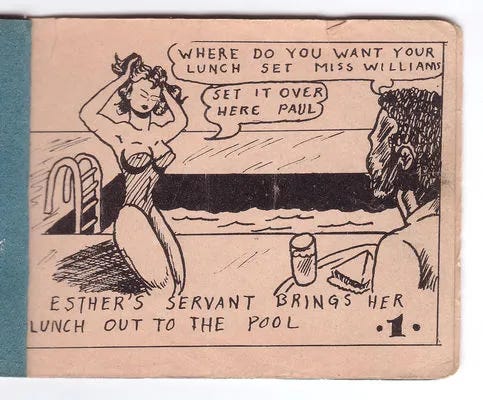
⚠️ Some links in this article are NSFW
Rule 34 of the Internet reads something along the lines of “if it exists, there is a porn version of it.” Anyone who has spent any longer than an hour online knows this to be true. But the practice of creating pornographic parodies of popular characters from books, films, tv and even celebrities and politicians has been around much, much longer than the information superhighway.
In the 1920’s a series of underground comic books collectively known as “Tijuana bibles” began to appear. For the most part they were small, wallet-sized booklets containing erotic parodies of popular newspaper strips of the time. Generally about eight pages in length, strips such as Popeye, Dick Tracy and Blondie, among others, were all lampooned.
The creators behind these small comics kept themselves anonymous as the creation and sale of them was illegal. Still, some of the nom de plumes used, such as “Mr. Prolific,” became well known among underground comic circles.
While most comic strips became subjects of the Bibles as one point or another, there were some that proved more popular. Characters such as Tillie and Blondie, both on whom were pretty flapper girls within their own strips, are thought to have had as many as 40 Bibles dedicated to them each.

The Bibles were sold in places that men were known to gather at the time; bowling alleys, barber shops, garages, tobacco stores, burlesque houses and other such establishments. Art Spiegelman, the creator of the seminal graphic novel Maus and comics historian, notes that there seems to be no record of persecution against any publishers of the Bibles, although police would sometimes seize shipments of them or charge those found to be selling them. From historic newspapers, it appears that most producers of the Bibles were small, independently run printers who also created other pornographic materials such as playing cards, greeting cards and film reels, and used their own underground means of distribution, usually by the Railway Express Agency.
The Tijuana Bibles — so called because they were originally believed to have been produced in and shipped across the boarder from Tijuana, Mexico (and Bibles carried names and addresses of phony publishing companies) — were at their most popular in the 1930s. However, with the advent of World War II the popularity of the Bibles fell rapidly and never recovered. Everything from the shortage of paper during war time to the retirement of Doc Rankin, who it is believed produced 200 Bible stories himself, lead to the end of the publications.
After World War II there was an effort to revive the Bibles, however many of the original printing plates had been worn down so much due to continuous re-printing they had to be recut. Many of these recut plates were done by amateur engravers and thus the quality simply was not there. Newer Bibles, such as those by the infamous “Mr. Dyslexic,” were so poorly drawn and written that even the greatest of Bible fans didn’t bother with them. By the early 1960’s the Tijuana Bible was no more.

With the rise of legitimate pornography such as Playboy and the coming of the internet, there is no shortage of places to find erotic parodies of your favourite characters. Indeed, there is a huge community of artists who specialise in erotic art, as shown by the furore over the (now somewhat reversed) ban of elicit material on Tumblr.
Arguably early signs of the Sexual Revolution that was to come, Tijuana Bibles are now an interesting piece of comics and art history; interesting curios for fans and collectors that speak to an earlier, if not more innocent, time before the World Wide Web.
This article was originally published on Medium on Jun 7, 2021. It has been edited for clarity and spelling.


This was a great read. I never heard of them before, but the whole idea made me chuckle. Like primordial hentai essentially. Thanks for sharing 👏
Your piece explores the Tijuana Bibles, shedding light on a fascinating and often overlooked aspect of comic and pop culture history. The way you connect these underground comics to modern-day internet culture adds depth and relevance, making it an engaging read. I really liked the historical context and anecdotes, great read.